A Bathing Ape, or BAPE as it’s commonly known, has become a streetwear icon. With its bold designs and coveted collaborations, it’s no wonder you’re curious about the brand’s origins.
But when it comes to production, the question arises: is BAPE made in China or Japan?
This article will answer all that, so read on to learn more about the brand’s history, uncovering its birthplace and examining where it gets its signature pieces produced today.
Along the way, you might be surprised to learn some interesting facts about BAPE’s reputation in its home country of Japan.
So, if you’re looking to settle the debate of BAPE’s manufacturing location and gain a deeper understanding of the brand, keep scrolling!
Also Read: Where Are Invicta Watches Made? | Is Invicta Chinese or Swiss?
What is BAPE?
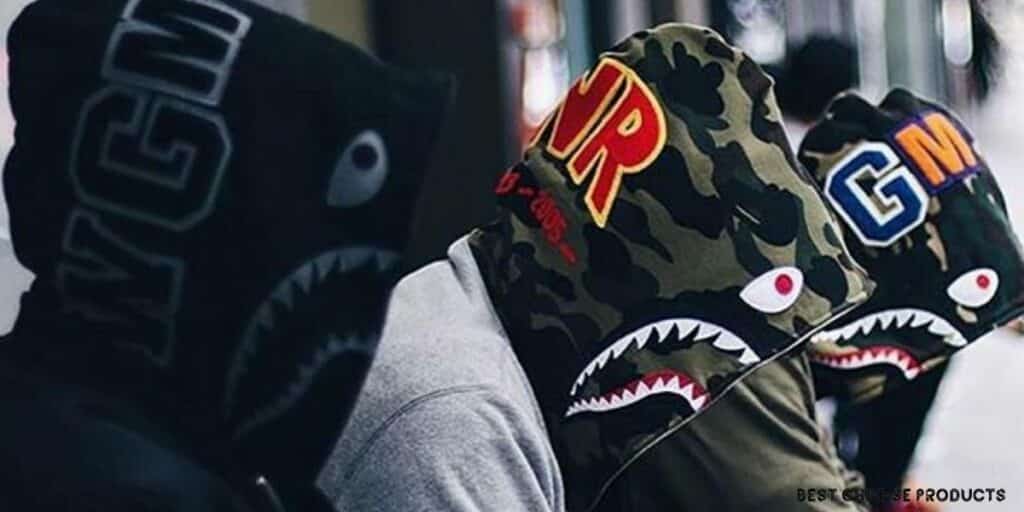
Bape, also known as Bathing Ape, was founded in Ura-Harajuku, Tokyo, Japan, in 1993 by Tomoaki Nagao, popularly known as Nigo.
The brand quickly gained recognition and became synonymous with streetwear fashion. In 2011, Bape was acquired by the Hong Kong-based fashion group I.T for approximately $2.8 million.
Despite the acquisition, Bape remains a Japanese brand, with its headquarters still located in Tokyo.
Although Nigo initially continued his involvement with the brand after the acquisition, he eventually left in 2013 to pursue new endeavors.
Under the ownership of the I.T group, Bape continued to thrive and expand its presence.
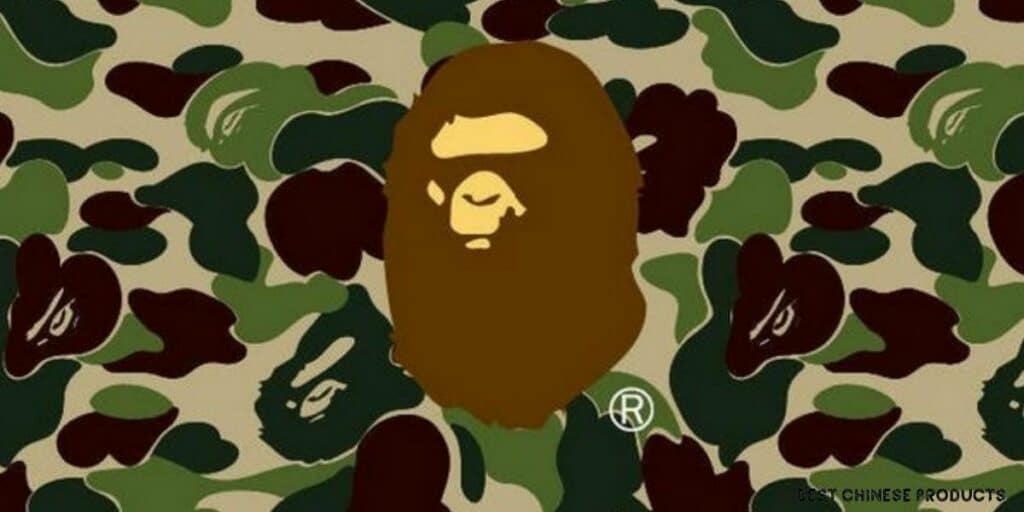
With 19 stores in Japan catering to men, women, and children, Bape offers a diverse range of streetwear and lifestyle products.
Furthermore, Bape has established a global footprint, with stores in over 18 prominent international locations.
The brand has collaborated with renowned companies such as Pepsi, Coca-Cola, Adidas, Stussy, Carhartt, Supreme, Timberland, and even Disney.
Additionally, Bape has collaborated with notable artists like Wiz Khalifa, The Weeknd, and Big Sean.
This collaborative approach has propelled the brand’s popularity and cemented its position in the streetwear industry.
Is BAPE Made in China or Japan?
When it comes to the manufacturing of Bape products, China and Japan take center stage, with a smaller fraction of items being produced in Vietnam.
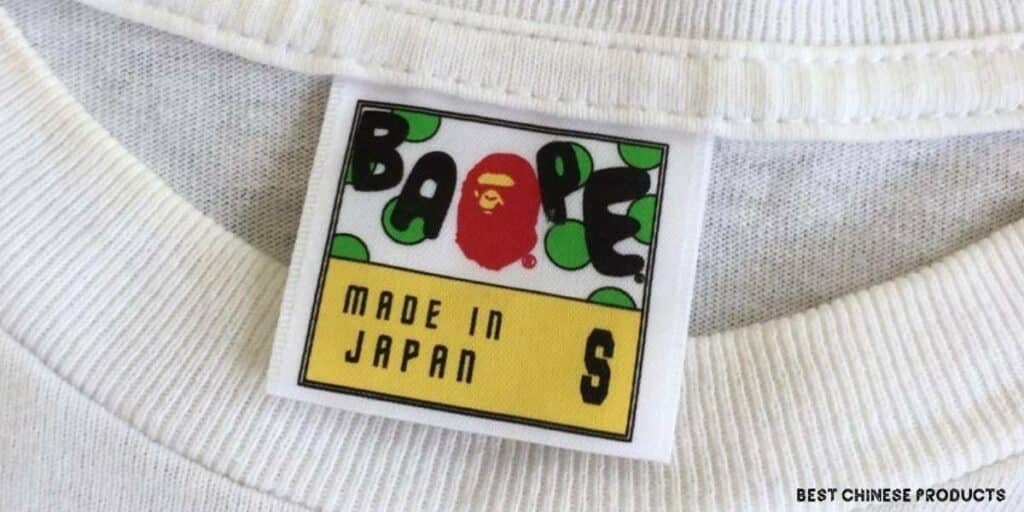
However, China remains the primary manufacturing hub for Bape. It is worth noting that Bape is gradually shifting its focus towards producing more items in Japan, reflecting its birthplace and drawing inspiration from its cultural heritage.
This shift may be partly attributed to recent events, such as the COVID-19 pandemic, which prompted the Japanese government to encourage domestic manufacturing.

Consequently, some customers who purchased Bape products years ago may have seen a “Made in China” tag, while newer versions of the same styles bear a “Made in Japan” tag.
An insider source on the bapetalk.com forum claims that approximately 40% of the manufacturing process takes place in China, while the remaining 60% is completed in Japan.
According to this source, Bape garments are initially produced in China before being sent to Japan for design and printing processes.
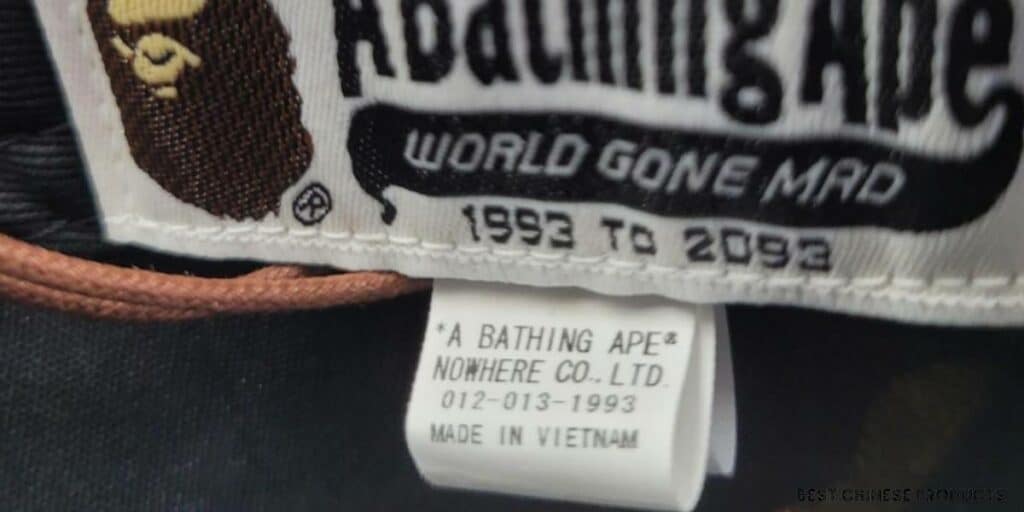
This strategic approach allows Bape to affix a “Made in Japan” tag to the finished products, despite a significant portion of the manufacturing occurring in China.
On the official Bape website, one can find numerous product lineups accompanied by disclosed manufacturing locations.
While the list presented here is merely a sample, it offers a glimpse into the diverse origins of Bape products, encompassing Japan, China, and even Vietnam.
| Bape Products Made in Japan | Bape Products Made in China | Bape Products Made in Vietnam |
| 1st camo bape STA Mesh Cap | Bape hoop tee | Bape jet cap |
| ABC camo sweatpants | Hoop one-point tee | |
| Porter 1st camo long wallet | X Hugo sweatpants | |
| ABC camo mask | Bape STA #M1 and #M2 shoe | |
| STA Camo Tie | 1st camp pocket hoodies | |
| Multi-label 1st camo oversized hoodie | Printed top | |
| A Bathing Ape line of long socks | Color block oversized pullover hoodie | |
| X vogue pouch | 1st camo milo shark tee | |
| Tie-Dye bucket hat | Solid camo mini tote bag | |
| Solid camo corduroy panel cap | Skull STA L sneakers | |
| Milo pocket fill shorts | Baby Milo Sleepers | |
| Milo bib | X suicoke sandals | |
| Premium bape 2021 happy new year bag | ||
| Busy shark day pack | ||
| Plush cardholder | ||
| Plush keychains | ||
| Type 1 Bape X watch | ||
| X new era B.K. 15th anniversary ABC camo nine fifty cap |
Is BAPE Cheaper in Japan?
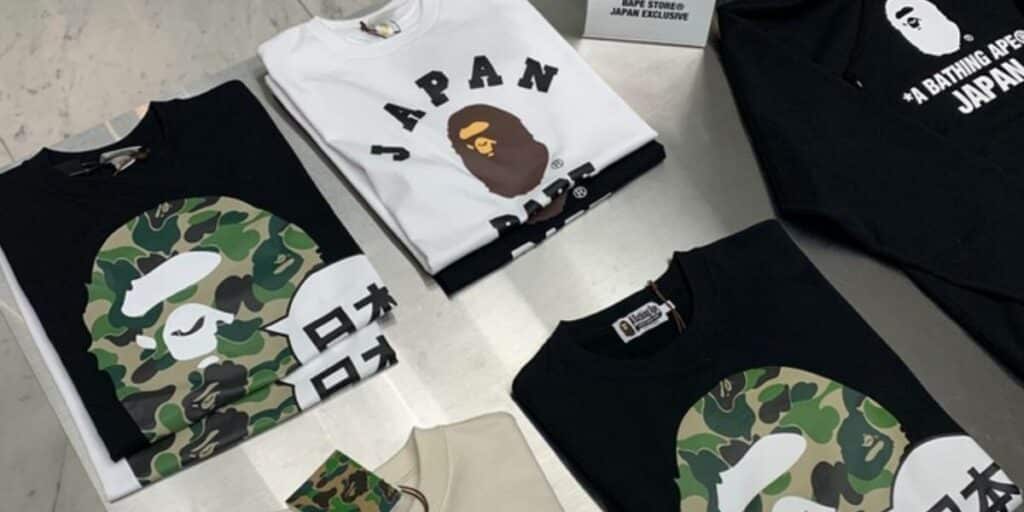
Let me tell you something interesting about BAPE and its pricing in Japan.
Japan, despite its reputation as an expensive travel destination, can actually be a budget-friendly place for shopping, especially when it comes to clothing brands like BAPE.
If you’re a fan of luxury streetwear and want to get your hands on BAPE products, buying them in Japan can save you a significant amount of money compared to purchasing them outside the country.
When you buy BAPE in Japan, you’ll notice that it costs considerably less than in other regions like Europe, the UK, US, or even through online platforms like us.bape.com.
The reason behind this price difference lies in the fact that BAPE originated in Japan and is more popular and readily available there. The brand’s presence in the country leads to increased competition among BAPE stores, resulting in lower prices for their products.
Additionally, the weak value of the Japanese yen further contributes to the affordability of BAPE items.
So, if you’re looking to score some great deals on BAPE and save some money, buying them in Japan is a fantastic option.
Plus, there’s the added benefit of having a lower chance of stumbling upon fake Bapes, ensuring you get the genuine articles.
Is BAPE Cheaper in Hong Kong?

Although BAPE is a Japanese clothing brand, its production and ownership have shifted to Hong Kong.
The manufacturing of BAPE’s shoes, apparel, and accessories now takes place in China, specifically Hong Kong. With production happening in a region where labor costs are relatively lower, one might expect BAPE products to be cheaper in Hong Kong. However, the reality is quite different.
Here’s the catch: BAPE may be based in Tokyo, but its popularity extends far beyond Japan.
Since its inception in 1993, BAPE has become a renowned street fashion brand known for its iconic designs and original patterns.
Its primary focus has always been meeting the clothing needs of the Japanese people. In order to remain loyal to their Japanese customer base and maintain their strong presence in the fashion hub of Tokyo, BAPE offers reduced prices for their goods in Japan.
Therefore, despite the assumption that BAPE products would be more affordable in Hong Kong due to its manufacturing base, the prices of BAPE items in Hong Kong are relatively higher compared to Japan.
So, if you’re looking to save some money on BAPE purchases, it’s best to head to Japan where you can take advantage of the brand’s local pricing strategy and enjoy the fashion-forward atmosphere of Tokyo.
Why is BAPE so Expensive?
BAPE clothing is characterized by vibrant colors and unique designs, which have contributed to its popularity among celebrities and fashion enthusiasts.
However, it remains relatively unfamiliar to the general public.Let’s delve into the reasons behind BAPE’s high price tag. There are several factors at play:
- Limited Quantities: BAPE intentionally produces its clothing in limited quantities. By doing so, the brand ensures exclusivity and generates a sense of urgency among potential buyers.
This scarcity effect, a marketing strategy, tends to increase the perceived value of BAPE items. People are often willing to pay more for products that are rare or difficult to obtain.
- High-Quality Materials: BAPE is known for using premium materials in its clothing. This choice of materials results in a higher quality product, which naturally commands a higher price compared to mass-produced garments.
It’s worth noting, though, that there have been reports suggesting BAPE has outsourced some of its production to China, potentially leading to a decline in quality.
Nevertheless, BAPE hoodies, for instance, are typically crafted from 100% cotton terrycloth, a soft and durable fabric that contributes to the elevated price.
Additionally, BAPE occasionally incorporates real fur and leather in certain products, which are more expensive than synthetic alternatives but offer a superior quality.
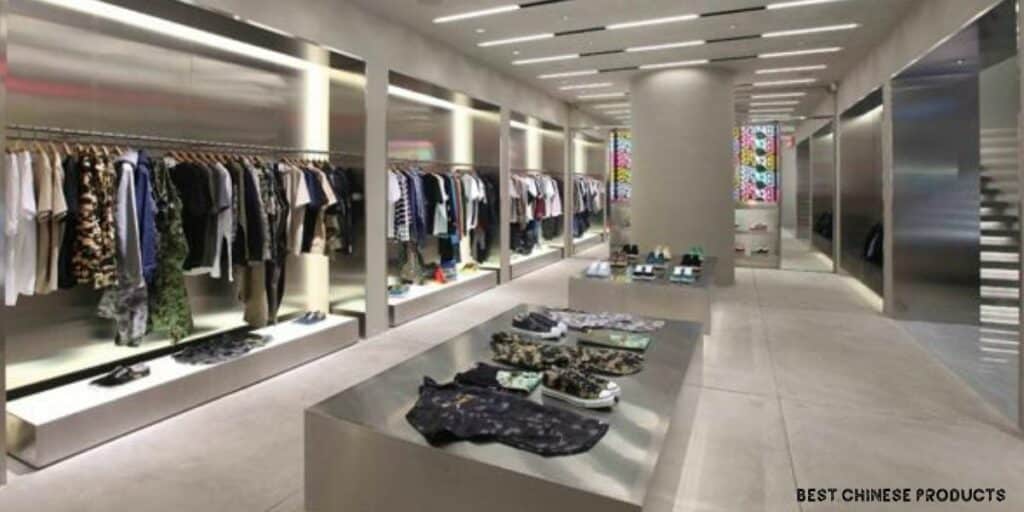
- Labor Costs: The skilled workers employed by BAPE receive fair wages for their craftsmanship, contributing to the higher production costs. The brand operates its own factories in Japan and China, allowing it to maintain quality control and keep labor costs relatively low.
However, this also means that BAPE’s supply is limited, often resulting in demand surpassing availability. The scarcity of products further contributes to the brand’s premium pricing.
- Brand Recognition: BAPE’s elevated prices are partially attributable to its brand recognition and status. Considered a luxury streetwear brand, BAPE’s apparel is often seen as a status symbol outside of Japan.
This perception of exclusivity surrounding the brand creates a higher demand, enabling BAPE to command premium prices.
Now, whether BAPE is worth its price is a subjective judgment. Some individuals may argue that the quality of BAPE clothing justifies its cost, while others might believe that alternative brands offer similar products at a more reasonable price.
Ultimately, the decision to purchase BAPE clothing depends on individual preferences and priorities. If you value high-quality garments and are willing to pay a premium, BAPE might be a suitable choice for you.
However, if you have budget constraints or don’t particularly resonate with the brand, exploring other brands offering similar products at a lower cost might be a more viable option.
Related
Page Contents
